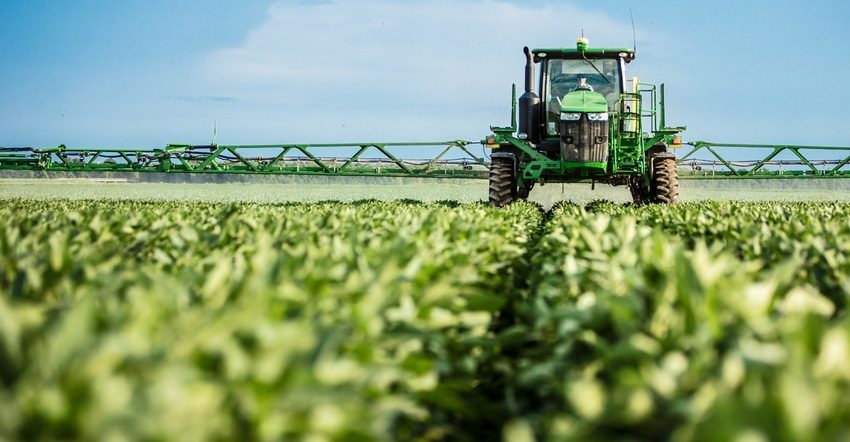June 17, 2022

Sponsored Content
Like a silent thief, pest resistance creeps over the U.S. agricultural landscape threatening yield and forcing farmers to shift their best-laid management plans as weeds, insects and diseases continue to outsmart the chemical control methods available. But you don’t have to face this resistance battle alone. The Take Action pesticide-resistance program is your ally to get ahead of yield-robbing pests every season.
Ten years ago, the soy checkoff led a consortium of industry groups to create an unbiased, science-based resistance education platform for farmers: Take Action. Land-grant university scientists, commodity groups including soy, corn, cotton, sorghum and wheat, as well as top ag chemical companies endorse the program’s resources. At first, Take Action focused on resistant weeds, with resources on weed biology, cultural practices, herbicides and economics.
![61942-1_IRR_Editorial_TAIndVoice_770x400_1[2].jpg 61942-1_IRR_Editorial_TAIndVoice_770x400_1[2].jpg](https://eu-images.contentstack.com/v3/assets/bltdd43779342bd9107/bltaf0b93690cd0e260/638f36023d62ca0789904700/61942-1_IRR_Editorial_TAIndVoice_770x400_1_5B2_5D.jpg?width=700&auto=webp&quality=80&disable=upscale)
“Today, we focus on insect and fungicide resistance as well,” says Bill Johnson, weed scientist at Purdue University. “The resources and information the program offers are more important today than ever before.”
Farmers across the country continue to fight the weed that, in 2016, the Weed Science Society of America identified as the most troublesome: Palmer amaranth. With confirmed resistance to multiple classes of herbicides, it’s an important limiting factor to farmer profitability.
“We have experience dealing with resistant rye grass and giant ragweed on our farm, and pigweed continues to be a threat,” says Susan Watkins, who farms in eastern Virginia. “But by changing chemistries, we seem to have it under control.”
Watkins, a soy checkoff farmer-leader, credits helpful resources from Take Action and careful management of control methods with helping her avoid significant impacts from resistance so far. “We address (pigweed) early with residual herbicides during burndown and using Extend technology for early-season control. We think it’s important to stay up on the latest research and recommendations based on checkoff research.”
Trent Irby, associate Extension professor at Mississippi State University, agrees that managing resistant weeds takes a multi-faceted approach. “Options range from the use of residual herbicides to narrowing row spacing to help get a quicker canopy closure and reduce the window available for weed seed germination early in the season.”
![61942-1_IRR_Editorial_TAIndVoice_770x400_2[2].jpg 61942-1_IRR_Editorial_TAIndVoice_770x400_2[2].jpg](https://eu-images.contentstack.com/v3/assets/bltdd43779342bd9107/blt18b620e0219c9798/638f36064c6c123589c8cac9/61942-1_IRR_Editorial_TAIndVoice_770x400_2_5B2_5D.jpg?width=700&auto=webp&quality=80&disable=upscale)
How did we get here?
There are similarities in how resistance develops and what farmers should do to manage it across the pest spectrum of weeds, insects and diseases.
“Genetic variation exists across pest populations. Some strains (or individuals) might be resistant, or less sensitive to pesticides. Once an application is made, it will kill the sensitive strains and leave the resistant individuals to reproduce and increase in the population,” says Carl Bradley, a plant pathologist at the University of Kentucky.
![61942-1_IRR_Editorial_TAIndVoice_770x400_3[3].jpg 61942-1_IRR_Editorial_TAIndVoice_770x400_3[3].jpg](https://eu-images.contentstack.com/v3/assets/bltdd43779342bd9107/blt1733d162ca0c2329/638f360a2c29d901f132a947/61942-1_IRR_Editorial_TAIndVoice_770x400_3_5B3_5D.jpg?width=700&auto=webp&quality=80&disable=upscale)
What can we do?
To prevent fungicide resistance, farmers can choose varieties with a high level of foliar disease resistance. Fungicide applications containing multiple active ingredients with different modes of action and rotating chemistries through crop rotation are other effective tools.
“There are no weed resistant crops, so in a sense, choosing a disease-resistant variety and selecting chemistries with various modes of action places additional tools in your toolbox,” says Bradley.
The decision to use a fungicide, for example, is not always easy. This is especially true when dealing with emerging diseases, like target spot. Applying a fungicide prematurely can lead to additional exposure of fungal plant pathogen populations to fungicides, which can lead to the beginnings of fungicide resistance.
The soy checkoff continues to invest in communicating the results of resistance research. Visit IWillTakeAction.com for the complete pesticide-resistance toolbox.
“Resistance is not going away. Farmers should use the free resources offered to tailor a management program addressing the specific pest issues on each of their farms,” concludes Johnson.
About the Author(s)
You May Also Like




